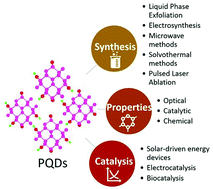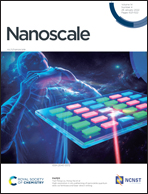Phosphorene quantum dots: synthesis, properties and catalytic applications
Abstract
Phosphorene quantum dots (PQDs) belong to a new class of zero-dimensional functional nanostructures with unique physicochemical and surface properties in comparison with few-layer phosphorene and other 2D analogues. Tunable band gap as a function of number of layers, ease of passivation and high carrier mobility of PQDs have attracted considerable attention in catalysis research due to which spectacular progress has been made in PQD research over the last few years. PQDs are now considered as promising catalytic materials for electrocatalytic water splitting and nitrogen reduction, lithium–sulfur batteries, solar light–driven energy devices and biocatalysis, either in pristine form or as an active component for constructing heterostructures with other 2D materials. In the light of these recent advances, it is worthwhile to review and consolidate PQD research in catalytic applications to understand the challenges ahead and suggest possible solutions. In this review, we systematically summarize various synthetic strategies including ultrasonic and electrochemical exfoliation, solvothermal treatment, blender breaking, milling, crushing and pulsed laser irradiation. Furthermore, the physiochemical properties of PQDs are discussed based on both experimental and theoretical perspectives. The potential applications of PQDs in catalysis with special emphasis on photocatalysis (solar light–driven energy devices) and electrocatalysis (oxygen evolution reactions and hydrogen evolution reactions) -are critically discussed along with the present status, challenges and future perspectives

- This article is part of the themed collection: Recent Review Articles


 Please wait while we load your content...
Please wait while we load your content...